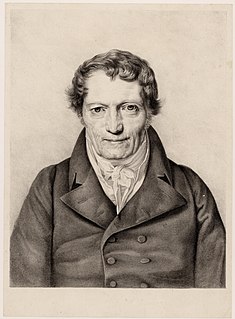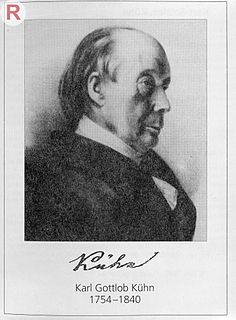
Leonhard Euler was a Swiss mathematician, physicist, astronomer, geographer, logician and engineer who made important and influential discoveries in many branches of mathematics, such as infinitesimal calculus and graph theory, while also making pioneering contributions to several branches such as topology and analytic number theory. He also introduced much of the modern mathematical terminology and notation, particularly for mathematical analysis, such as the notion of a mathematical function. He is also known for his work in mechanics, fluid dynamics, optics, astronomy and music theory.

In mathematics, Euler's identity is the equality

Spherical geometry is the geometry of the two-dimensional surface of a sphere. It is an example of a geometry that is not Euclidean. Two practical applications of the principles of spherical geometry are navigation and astronomy.

Breitkopf & Härtel is the world's oldest music publishing house. The firm was founded in 1719 in Leipzig by Bernhard Christoph Breitkopf.

Liebster Gott, wenn werd ich sterben?, BWV 8, is a church cantata by Johann Sebastian Bach. He composed the chorale cantata in Leipzig for the 16th Sunday after Trinity and first performed it on 24 September 1724. The cantata is based on the hymn with text written by Caspar Neumann, professor of theology at Breslau, and its musical setting by Daniel Vetter, organist at the Nikolaikirche in Leipzig. The cantata was revived, probably in September 1747, in the new key of D major instead of the earlier key of E major.
"Bist du bei mir, geh ich mit Freuden" is an aria from Gottfried Heinrich Stölzel's opera Diomedes, which was first staged on 16 November 1718. The aria is best known as "Bist du bei mir", BWV 508, a version for voice and continuo found as No. 25 in the 1725 Notebook for Anna Magdalena Bach.

Eustathius of Thessalonica was a Byzantine Greek scholar and Archbishop of Thessalonica. He is most noted for his contemporary account of the sack of Thessalonica by the Normans in 1185, for his orations and for his commentaries on Homer, which incorporate many remarks by much earlier researchers.
The New Bach Edition (NBE), in German Neue Bach-Ausgabe (NBA), is the second complete edition of the music of Johann Sebastian Bach, published by Bärenreiter. The name is short for Johann Sebastian Bach: New Edition of the Complete Works. It is a historical-critical edition of Bach's complete works by the Johann Sebastian Bach Institute (Johann-Sebastian-Bach-Institut) in Göttingen and the Bach Archive (Bach-Archiv) in Leipzig,
Historical editions form part of a category of printed music, which generally consists of classical music and opera from a past repertory, where the term can apply to several different types of published music. However, it is principally applied to one of three types of music of this sort:

Janus Cornarius was a Saxon humanist and friend of Erasmus. A gifted philologist, Cornarius specialized in editing and translating Greek and Latin medical writers with "prodigious industry," taking a particular interest in botanical pharmacology and the effects of environment on illness and the body. Early in his career, Cornarius also worked with Greek poetry, and later in his life Greek philosophy; he was, in the words of Friedrich August Wolf, "a great lover of the Greeks." Patristic texts of the 4th century were another of his interests. Some of his own writing is extant, including a book on the causes of plague and a collection of lectures for medical students.

Andreas Speiser was a Swiss mathematician and philosopher of science.
The Euler Committee of the Swiss Academy of Sciences was founded in July 1907 with the objective of publishing the entire scientific production of Leonhard Euler in four series collectively called Opera Omnia.
Patrick Van Goethem is a Belgian countertenor, known for performing early music.
Werner Neumann was a German musicologist. He founded the Bach-Archiv Leipzig on 20 November 1950 and was a principal editor of the Neue Bach-Ausgabe, the second edition of the complete works of Johann Sebastian Bach.

Karl Gottlob Kühn was a German physician and medical historian.

BWV Anh., abbreviation of Bach-Werke-Verzeichnis Anhang, is a list of lost, doubtful, and spurious compositions by, or once attributed to, Johann Sebastian Bach.

The Kyrie–Gloria Mass for double choir, BWV Anh. 167, is a mass composition in G major by an unknown composer. The work was likely written before the second quarter of the 18th century. In the 1730s Johann Sebastian Bach produced a manuscript copy of the Mass. In the early 19th century, it was published and performed as a composition by Bach. Scholarship published in the second half of the 19th century contested the work's attribution to Bach.

Rolf-Rüdiger Thiele is a German mathematician and historian of mathematics, known for his historical research on Hilbert's twenty-fourth problem.











